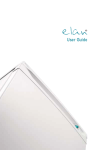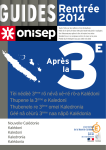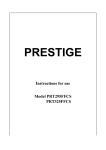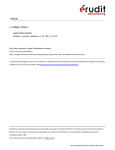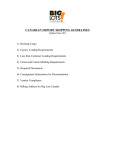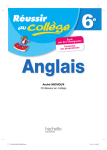Download Hisense MC55196 fridge-freezer
Transcript
3 USING YOUR FRIDGE FREEZER Salad bin Operating instructions Noises inside the Fridge Freezer Switching on your Fridge Freezer If you have not owned a refrigerator before, you may notice that it makes some rather unusual noises. Most of these are perfectly normal, but you should be aware of them! This is the most humid part of the fridge. Store vegetables, fruit, fresh salad items, eg. unwashed whole lettuce, whole tomatoes, radishes, etc here. Gurgling, whooshing WE RE&OMMEND THAT ALL PR2'8&(.(37,17+(6$/$'%,1 IS WRAPPED 1. Before your Fridge Freezer is plugged in, open the fridge door and adjust the thermostat control to the highest setting. 2. Once the Fridge Freezer has cooled down, adjust the thermostat control to a suitable setting. Adjusting the temperature To change the internal temperature of the Fridge Freezer use the control dial, located inside the fridge. The recommended setting at normal room temperature is 3-4. The Fridge Freezer may not operate at the correct temperature if it is in a particularly hot or cold room or if you open the Fridge Freezer doors very often. These noises are caused by the circulation of the refrigerant liquid in the cooling system. It has become more pronounced since the introduction of &F& free gases. This is not a fault and will not affect the performance of your Fridge Freezer. Humming, purring or pulsating This is the compressor motor working, as it pumps the refrigerant around the system. When you store foods in the fridge &ool area Is the Fridge Freezer cold enough? If you are concerned that your Fridge Freezer is not being kept cold enough, and wish to check the temperature, you will need a special fridge thermometer available from most supermarkets and hardware shops. Place the thermometer on the middle shelf of the fridge cabinet or the middle basket of the freezer, where it can be read easily. Leave overnight, the temperature in the fridge should be between Ò& and Ò& and -Ò& or lower in the freezer. See ‘Adjusting the temperature’. NOTE: ALWAYS WRAP AND STORE RAW MEAT, POULTRY AND FISH ON THE LOWEST SHELF AT THE BOTTOM OF THE FRIDGE. THIS WILL STOP THEM DRIPPING ONTO, OR TO8&+,1*OTHER FOODS This is where to store foods which will keep longer if they are kept cool. Milk, eggs, yogurt, fruit juices, hard cheeses, eg. cheddar. Opened jars and bottles of salad dressings, sauces and jams. Fats, eg, butter, margarine, low-fat spreads, cooking fats and lard. &OOL &OOL &OLDEST &oldest area: r& to r& This is where foods which must be cold to keep them safe should be kept: â Raw and uncooked foods should always be wrapped. â Pre-cooked chilled foods, eg. ready meals, meat pies, soft cheeses. â Pre-cooked meats eg. ham. â Prepared salads (including pre-washed chopped, pre-packed mixed green salads, rice, potato salad etc). â Desserts,eg. fromage frais, home-prepared food and leftovers or cream cakes. DO NOT STORE FLAMMABLE GASES OR LIQUIDS IN THE FRIDGE 4 USING YOUR FRIDGE FREEZER Shopping for chilled foods Don’t buy in your lunch hour! Unless you have a Fridge Freezer at work to keep the food cold in the afternoon. Leaving food in your car or at room temperature for a prolonged period of time could raise food temperature to the level at which harmful bacteria grow. Keep chilled foods together When you are going around the supermarket and when you are travelling home, if you keep all the chilled foods together they will help to keep each other cold. Use a cool bag Special insulated bags can be bought from most supermarkets and hardware shops. These keep food cold for longer, but are only for getting chilled foods home, not storing it. Unwrap as soon as you get home Always unpack and place chilled foods in the Fridge Freezer before storing dry food-stuffs. Tips for keeping food perfect in the Fridge Freezer Shut the door To prevent cold air escaping, limit the number of times you open the door. When returning from shopping, sort foods to be kept in your Fridge Freezer while the door is closed. Shopping for frozen foods Your Fridge Freezer is 4 star When you are buying frozen food, look at the Storage Guidelines on the packaging. You will be able to store each item of frozen food for the period shown against the 4 star rating. This is usually the period stated as ‘Best Before’, on the front of the packaging. â â â â â â Check the freezer temperature Check the temperature of the frozen food cabinet in the shop where you buy your frozen foods. It should show a temperature lower than -18°C. Choose packs carefully Take a quick look at the frozen food package and make sure it is in perfect condition. Purchase frozen food last Always buy frozen products last on your shopping trip or visit to the supermarket. Take extra care with meat and fish Keep frozen foods together Cooked meats should always be stored on a shelf above raw meats to avoid bacterial transfer. Keep raw meats on a plate which is large enough to collect juices and cover it with cling film or foil. When you are going around the supermarket and when you are travelling home, if you keep all the frozen foods together they will help to keep each other cold. Leave space around food Store food straight away This will allow cold air to circulate around the Fridge Freezer. Wrap up food Don’t buy frozen food unless you can freeze it straight away. Special insulated bags can be bought from most supermarkets and hardware shops. These keep frozen food cold for longer. To prevent transfer of flavours and drying out, food should be separately packed or covered. Fruit and vegetables need not be wrapped. Thawing frozen food For some foods, thawing before cooking is unnecessary. Vegetables and pasta can be added directly to boiling water or steam cooked. Frozen sauces and soups can be put into a saucepan and heated gently Always let pre-cooked food cool down before you put it in the Fridge Freezer. This will stop the internal temperature of the Fridge Freezer until thawed. from rising. Let pre-cooked food cool properly Preparations for freezing â â Leave cooked food to cool completely. Chill food in the Fridge before freezing if possible. Consider how you want to cook the food before freezing it. Don’t freeze food in metal containers as you may want to microwave it straight from the freezer. Use special freezer bags available from supermarkets, freezer film, polythene bags, plastic containers, aluminium foil (heavy grade only, if in doubt, double wrap). Don’t use aluminium foil for acidic foods (such as citrus fruits). Don’t use thin cling film or glass. Don’t use used food containers (unless cleaned thoroughly first). Exclude as much air from the container as possible. You could buy a special vacuum pump which sucks excessive air out of the packaging. Leave a small amount of ‘air space’ when freezing liquids, to allow for expansion. You can use the space in the Fridge Freezer most efficiently if you freeze liquids (or solids with liquids, such as stew) in square blocks. This is known as ‘preforming’. Pour the liquid into a polythene bag which is inside a square sided container. Freeze it like this, then remove it from the container and seal the bag. 5 USING YOUR FRIDGE F REE ZER Freezing fresh foods The golden rule s Use quality food and handle it as little as possible. Freeze food in small quantities, it freezes faster, takes less time to thaw and enables you to eat it in the quantity you need. Freezing fresh foods First, estimate the amount of food you will be freezing. Turn the thermostat dial to the maximum setting which makes your freezer colder (approx -28°C), it will therefore freeze quicker and keep in the goodness. However you should use it sparingly to conserve energy. Remember to reset the thermostat dial to the Normal setting when you have finished freezing fresh foods. TO FREEZE 1. Cover food loosely. 2 . Thaw at room temperature. Don’t forget that thawing in a warm area Up to 2lb/900gm 2 hrs. before placing food in freezer and 4 hrs. after placing food in freezer. 24 hrs. before placing food in freezer and 24 hrs. after placing food in freezer. Recom m end ed storag e p eriod s (when frozen from fresh) encourages the growth of bacteria. 3. Always make sure there are no ice crystals in the food before cooking, particularly with meat. These crystals indicate that the food is not fully thawed. They result in lower temperatures when cooking. Lower cooking temperatures may not destroy dangerous bacteria. 4. Cook food as soon as possible after thawing. 5. Drain off and throw away any liquid lost during thawing. Oven thawing Many microwaves and ovens have thaw settings. To avoid bacterial build up, only use these if you intend to cook the food immediately afterwards. Safety tips A loaf of bread Not required. A small casserole Maximum of 6.6lb/3kg To thaw â Never re-freeze anything that has thawed out unless you cook it again, to kill off harmful bacteria. â Never re-freeze thawed shellfish. Useful tip â Re-seal packs properly after removing items. This prevents drying or ‘freezer burn’ and a build up of frost on any remaining food. Fruit syrup or sug ar p acked fruit Open frozen or p uréed fruit Fruit juices up to 12 months up to 18 months up to 6 months Lamb Beef Pork Veal Minced m eat Cured m eats Sausages Packed b acon Sm oked b acon/ chop s/ g am m on steaks Unsm oked b acon/ chop s/ g am m on steaks up to 10 months up to 10 months up to 6 months up to 6 months up to 3 months u p to 2 months up to 3 months up to 3 months up to 2 months up to 1 month Chicken Duck Goose Turkey up to 8 months up to 5 months up to 5 months up to 6 months Label everything What not to freeze Bananas, pomegranates, pears, carbonated liquids as they can explode or anything in a glass container, as these may crack. NOTE : Do not store inflammable gases or liquids in the freezer. â Many foods look the same when frozen, so careful labelling will help avoid forgetting what an item is. Storage times being exceeded could cause food poisoning. â You can buy special freezer tape for use in low temperatures. This tape is available in white, so you can use it to write the items contents on. You can buy special freezer labels and pens. Labels come in different colours which can help you use your Freezer effectively. For instance you could colour code meat red and vegetables green. Using a different colour label for each quarter of the year will help you rotate your frozen food more efficiently. â Write the contents and date. If you are really organised add the weight and notes on cooking such as ‘thaw first’, or ‘cook from frozen’ and keep a separate ‘log-book’ of what is in each drawer. This will save opening the door and searching around unnecessarily. Sm oked salm on Caviar Butter Cheese Suet Cream - d oub le/ w hip p ing Eggs - only freeze separated Milk up to 5 months to 2 months u p to 3 months don't freeze up to 1 month up to 6 months up to 6 months up to 6 months u p to 3 months up to 1 0 months up to 1 month 6 REVERSING THE DOOR SWING Both the door of the fridge and the freezer can be reversed. âEn su re th e Frid g e Fre e ze r is u n p lu g g e d a n d e m p ty. âWe recommend you have someone to assist y o u . 3 1 3 2 4 Tools required â3KLOOLSV style screwdriv e r â)ODW bladed screwdriv e r â$Q 8mm socket or spanner and 10mm socke t or spanner. When laying the Fridge Freezer on its back in order to gain access to the base, you should never tip it back by more than 45º. Rest on soft foam packaging or similar material to avoid damaging the cooling pipes at the rear of the Fridge Freezer. 5 Lift the Fridge door from the Fridge Freezer and put it to one side. bladed screw driver to remove the 2 screw covers at the rear of the Fridge lid. 6 Remove the adjustable feet of the Fridge Freezer and remove the bottom hinge bracket by unscrewing the bolts. 3ODFHWRRQHVLGH Unscrew and lift the lid of the Fridge IURPWKHUHDUDQGDERYHLW3XWLW in a safe place. 7 Remove the Freezer door. Remove the top hinge bracket by unscrewing the three retaining nuts, DO NOT undo the nut holding the hinge pin. Support the door to avoid damage. 8 Remove the middle hinge bracket using a 8mm socket or spanner and put to one side. Unscrew and remove the top hinge pin, turn the bracket over and replace it. Tighten securely. 9 Remove the bottom hinge bracket. Remove the pin and nut, turn the the hinge on the other side of the cabinet. 10 11 12 Remove the blanking plates and screw cover. Replace on the opposite side. 3ODFHWKH)UHH]HUGRRUEDFNRQWKH Fridge Freezer. Insert the holder of the middle hinge bracket in the hinge holder of the door and secure the bracket to the Fridge Freezer. Remove the three screws and the plastic blanking plate and replace them on the opposite side of the cabinet. NOTE: Check both doors are aligned horizontally and vertically, and that the seals are closed 13 14 pin, spacers and washers into the bushing at the top of the door. Check the door is aligned correctly before tightening. and sliding into place, securing it with the two screws. Replace the screw covers. 7 CLEANING MAINTENANCE Cleaning inside the Fridge Freezer Defrosting Moving your Fridge Freezer After defrosting y ou should clean the Fridg e Fre ezer internall y with a After a period of time frost will build up in certain areas in the freezer compartment. As a temporary measure, this frost should be scraped away using a plastic scraper. SCRAPER NOT INCLUDED NEVER use a metal or sharp instrument. Remove existing foods and baskets, ideally the frozen food should be put into another freezer. Scrape off and remove the frost, then move your foods back in order to gain access to other sections of the freezer. Complete defrosting will however, become necessary, approximately four times per year, or if the frost layer exceeds 5mm (1/4”) to maintain the efficiency of the Fridge Freezer. This should be carried out if the frost build up cannot be scraped away, or if it begins to interfere with the food storage. Choose a time when the stock of frozen food is low and proceed as follows: Location weak solution of bicarbonate of soda. Then rinse with warm water using a ‘wrung- out’ sponge or cloth. Wipe the Fridge Freezer dry before replacing the baskets and shelves. Wash the baskets and shelves in warm soapy water. Ensure the y are completely dry before replacing in the Fridge Freezer. Do not locate your Fridge Freezer near a heat source, eg. cooker, boiler or radiator. Also avoid direct sunlight in lean-to’s or sun lounges. Levelling the Fridge Freezer Make sure the Fridge Freezer is level. Use the rotating levelling feet at the front. If the Fridge Freezer is not level, the doors and magnetic seal alignments will be affected. Do not turn on the Fridge Freezer for 4 hours After the Fridge Freezer is in place it needs to be left for 4 hours. The coolant fluid needs time to settle. Installation Don’t cover or block the vents or grilles of your appliance. 1. Take out the frozen food, turn the Fridge Freezer off at the mains supply and leave the doors open. Ideally the frozen food should be put into another freezer or refrigerator. If this is not possible wrap the food, firstly in several sheets of newspaper or large towels and then a thick rug or blanket and keep it in a cool place. 2. Place a tray under the lip of the freezer cabinet to collect the water. 3. If you have one, scrape away as much frost build up as possible, using a plastic scraper. Cleaning the outside of the Fridge Freezer Use standard furniture polish to clean the Fridge Freezer exterior. Make sure that the doors are closed, to prevent polish getting on the magnetic door seal or inside. 4. Thawing of the remaining frost can be sped up by placing bowls of hot water inside the freezer compartment. As the solid frost loosens, prize it away with the ice scraper. Servicing Repairs and maintenance of the appliance should only be performed by an authorised, qualified technician. Changing the internal light 1. Before carrying out the bulb replacement always switch off and disconnect the electrical supply. 2. Unscrew the cover and slide it off by pushing the tab. 3. Remove the old bulb by unscrewing in an anti-clockwise direction. NOTE Don’t use a metal or sharp instrument and do not use any electrical appliances. Cleaning tip â Defrost and clean when food stocks are low. Collecting the defrost water from the freezer 1. Remove the bottom draw in the freezer compartment. 2. Place dish under the edge of the Freezer cabinet to collect the water. 4. Replace with a new bulb (15w) by screwing it in a clockwise direction making sure that it is secure in the bulb holder. 5. Replace the light cover back into position and click back into place. 6. Re-connect your Fridge Freezer to the electrical supply and switch on. 9 ELECTRICAL CONNECTIONS THIS APPLIANCE MUST BE EARTHED. This appliance is fitted with a fused three pin plug to BS 1363 which will be suitable for use in all houses fitted with sockets to current specifications. If the fitted plug is not suitable for your socket outlets, it should be cut off and carefully disposed of. To avoid a possible shock hazard, do not insert the discarded plug into a socket. Fitting a new plug If for any reason you need to fit a new plug, the flexible mains lead must be connected as shown here. The wires in the mains lead fitted to this appliance are coloured in accordance with the following code: If the colours of the wires in the mains lead of this appliance do not correspond with the coloured markings identifying the terminals in your plug, proceed as follows: The wire which is coloured Green and Yellow MUST be connected to the terminal which is marked with the letter E (Earth) or symbol or coloured Green. The wire which is coloured Blue MUST be connected to the terminal which is marked with the letter N or coloured Black. The wire which is coloured Brown MUST be connected to the terminal which is marked with the letter L or coloured Red. Before refitting the plug cover, check that there are no cut or stray strands of wire inside the plug. CONNECT GREEN AND YELLOW TO EARTH (E) Use a 13 Amp BS1362 fuse, only BSI or ASTA approved fuses should be (Note: some appliances do used. If you are in any way unsure which plug or fuse to use, always refer not have earth wires.) to a qualified electrician. CONNECT BLUE TO NEUTRAL (N) CONNECT BROWN TO LIVE (L) MAKE SURE THE CABLE IS HELD BY THE CLAMP Note: After replacing or changing a fuse on a moulded plug which has a fuse cover, the cover must be refitted to the plug, the appliance must not be used without a fuse cover. If lost, replacement fuse covers can be obtained from an electrical shop. This appliance complies with the following EEC Directives: 73 / 23 EEC (Low Voltage Directive) 89 / 336 EEC (EMC Directive). 11 SAFETY SAFETY Safety and warning information Important information when using the appliance Before you switch ON the appliance â This appliance is not intended for use by persons (including children) with reduced physical, sensory or mental capabilities, or experience or knowledge, unless they have been given supervision or instructions concerning the use of the appliance by a person responsible for their safety. Children should be supervised to ensure that they do not play with the appliance. â If the supply cord is damaged, it must be replaced by the manufacturer, its service agent or similarly qualified persons in order to avoid a hazard. â Never use electrical appliances inside the refrigerator (e.g. heater, electric ice maker, etc.). Explosion hazard! â Never use a steam cleaner to clean the appliance. The steam may penetrate electrical parts and cause a short circuit. Risk of electric shock! â Do not store products which contain flammable propellants (e.g. spray cans) or explosive substances in the appliances. Explosion hazard! â Do not stand or support yourself on the base, drawers or doors, etc. â Before defrosting and cleaning the appliance, pull out the mains plug or switch off the fuse. Do not pull out the mains plug by tugging the cable. â Commercially frozen pre-packed food should be stored in accordance with the frozen food manufacturers instruction. â Bottles containing a high percentage of alcohol must be sealed and stored in an upright position. â Keep plastic parts and the door seal free of oil and grease. Otherwise, the plastic and door seal will become porous. â Never cover or block the ventilation openings for the appliance. â Do not store bottled or canned drinks (especially carbonated drinks) in the ice compartment. Bottles and cans may explode! â Never put frozen food, or ice cubes, straight from the ice compartment into your mouth. Risk of frost burns to the lips and tongue! â Avoid prolonged touching of frozen food, ice or the inner freezer walls or tubing etc. Risk of frost burns to the skin. â Do not scrape off frost or stuck frozen food with a knife or pointed object. You could damage the refrigerant tubing. Leaking refrigerant may ignite. Only use a plastic scraper. â In the case of malfunction, under no circumstances should you attempt to repair the appliance yourself. Repairs carried out by inexperienced persons may cause injury or further malfunctioning to the appliance. â When the appliance is unplugged please wait for 5 minutes before plugging it in again. Otherwise, the compressor will be overloaded. Please read the operating and installation instructions carefully. They contain important information on how to install, use and maintain the appliance. Keep all documentation for subsequent use or for the next owner. Technical safety This appliance contains a small quantity of environmentally friendly but flammable R600a refrigerant. Ensure that the tubing of the refrigeration circuit is not damaged during transportation and installation. Leaking refrigerant may ignite. If damage has occurred - Keep naked flames and/or ignition sources away from the appliance. - Pull out the mains plug. - Thoroughly ventilate the room for several minutes. - Notify customer services. The more refrigerant an appliance contains, the larger the room must be. Leaking refrigerant can form a flammable gas-air mixture in rooms which are too small. The room must be at least 1m 3 per 8 g of refrigerant. The amount of refrigerant in your appliance is indicated on the rating label on your appliance. â Do not use electrical appliances such as a hairdryer or heaters near your refrigerator. â Donot store inflammable gases or liquids inside your refrigerator. Children in the household â Keep children away from the packaging and its parts. Danger of suffocation from folding cardboard and plastic film! â Do not allow children to tamper with the controls or play with the appliance. It is not a toy. Under no circumstances should children be allowed to sit on the bins or hang from the door. â If the appliance features a lock, keep the key out of the reach of children. General requirements â The appliance is designed for domestic use inside the home and is not intended for commercial or industrial use. â The appliance must be used to store food products by adults only and according to the instruction manual. â Try to avoid keeping the door open for long periods or opening the door too frequently in order to conserve energy. â Do not fill the appliance with too much food: cold air must circulate freely for food to be preserved properly.













